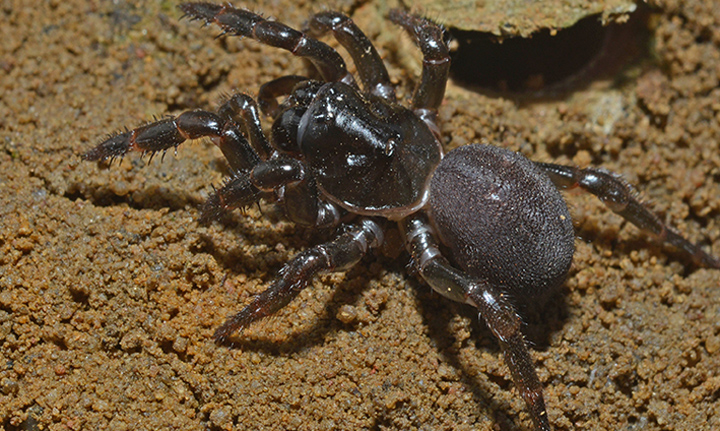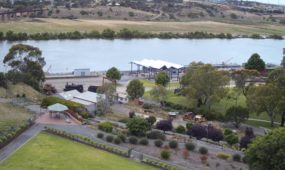Trapdoor spider's ancient ocean journey uncovered
Uncategorized
A TRAPDOOR spider found in only two places on earth likely travelled by raft from South Africa to South Australia millions of years ago.

Sign up to receive notifications about new stories in this category.
Thank you for subscribing to story notifications.

Researchers from the University of Adelaide have discovered the dispersal of the spider took place between two and 16 million years ago and not as a result of the Africa-Gondwana separation millions of years earlier.
The trapdoor spider – Moggridgea rainbow – is found only on Kangaroo Island off the coast of South Australia and – lives sedentary land-based lifestyle. But research published in the journal PLOS ONE today shows the spider belongs to a genus of trapdoor spider otherwise found only in South Africa.
University of Adelaide PhD candidate Sophie Harrison said conventional wisdom had previously suggested the two species were separated when Africa split from Gondwana about 95 million years ago.
“But our research showed that the divergence of M. rainbowi from African Moggridgea trapdoor spiders occurred sometime between two and 16 million years ago, well after the Africa-Gondwana separation,” she said.
“Likewise, the timing of divergence rules out the other alternative theory for the spiders arrival in Australia – that of being transported with humans, who arrived in Australia much later.”
Professor Andrew Austin, Harrison’s PhD supervisor, said the remaining and most logical explanation was a 10,000km journey across the Indian Ocean from Africa to Australia.
He said the timing indicated the spiders could have become accidental travellers through a process of rafting.
“Rafting could be a huge amount of debris, mostly trees and other vegetation that has some soil in it that gets washed down rivers at times of extensive floods and forms essentially a large raft,” Prof Austin said.
“If there were to be trapdoor spiders that got caught up in the rafts, then they possibly could have rafted over many months to reach Australia. The chances of that happening are rare and remote, but we feel there is great detail to say it happened.
“Because these trapdoor spiders live in a silk tube that protects them from water and the elements, they’ve got a place that they can survive over that long period of time.”
Kangaroo Island is Australia’s third biggest offshore island and has long been regarded as one of the world’s most pristine natural environments.
To establish the connections between the Kangaroo Island and South African trapdoor spiders, the researchers generated DNA sequences from six molecular markers to compare the two species.
This Molecular Clock technology was crucial in showing the divergence time of 2-16 million years ago with separate populations on Kangaroo Island diverging between 1 and 6 million years ago.
“The fact that this has only ever been recorded rarely in spiders and virtually not at all with trapdoor spiders, is what makes the findings so remarkable,” Professor Austin said.
“The broader implications for this study are that we are looking at the evolution of the Australian trapdoor spider fauna and trying to document all of the species.”
M. rainbowi are about the size of an Australian 10-cent piece and lives on coastal riverbanks banks close to American River and Western River on Kangaroo Island.
Jump to next article



